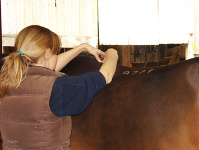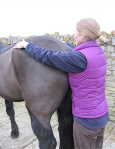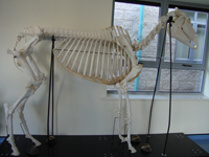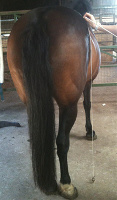McTimoney Manipulation for Animals




What is the McTimoney technique?
John McTimoney developed his chiropractic technique in the 1950’s for humans for neck and back pain then adapted it for animals. For more than 60 years McTimoney Animal Practitioners have been helping horses, dogs, cats and farm animals.
Animal McTimoney Manipulation is a holistic technique and the whole body of the animal is assessed at every treatment. The basis is to align and balance the musculoskeletal system by helping to relieve muscular discomfort and restore correct nerve function. No anaesthetic or drugs are needed in order to treat and generally animals accept the treatment well as it is not invasive or intrusive. By liaising with vets, trainers and other paraprofessionals such as dentists/saddlers or behaviourists the cause of the problem is addressed not just the symptoms. When used in a preventative manner it can significantly benefit the animal athlete to address any restrictions before problems arise.
Members of the McTimoney Animal Association are recognised by the British Equine Veterinary Association (BEVA) as allied paraprofessionals.


The Biology Bit – How McTimoney Works…
The skeleton provides the levers of the musculoskeletal system, and the muscles the fabric. The spine consists of a chain of interrelated vertebrae through which the spinal cord runs and nerves exit between each one. Each vertebra also has tendon and ligament attachments and every vertebral joint has a range of motion that it usually functions correctly within.
A misalignment describes a vertebral joint that has become ‘stuck’ or restricted within its range of movement. This results in the build up of muscle spasms, reduced motion of the vertebral joints, changes in surrounding muscle tone, reduced flexibility and potential impingement of the nerves. This means the vertebral joint cannot function correctly which in turn affects the function of other joints in a knock-on-effect as compensations build up and the overall movement of the animal changes.
The treatment consists of rapid & specific adjustments done by hand to restore alignment and correct joint function without forcing or stressing the joint or the body. The speed and accuracy of the adjustments are the key to their effectiveness – each adjustment works on the muscles and ligaments holding the stuck vertebrae in position in order to restore its normal range of movement. The adjustments release muscular spasms and enable even the deep muscle groups to be addressed.
Sometimes the body needs a little help to heal itself…
Let’s look at the evidence…
For all those wanting to read a bit more, please see this link to a very good research article demonstrating the effectiveness of McTimoney Manipulation in reducing muscle tension and spasm in the long back muscles of the horse compared to other techniques. Harriet uses both McTimoney Manipulation and Reciprocal Inhibition (the other technique mentioned in this paper). In simple terms, both have been shown to be effective in releasing muscle tension.
There are also a couple of papers upcoming for publication that show effective rebalancing of pelvic rotations and an improvement in stride length following McTimoney treatment in horses – very encouraging stuff!

